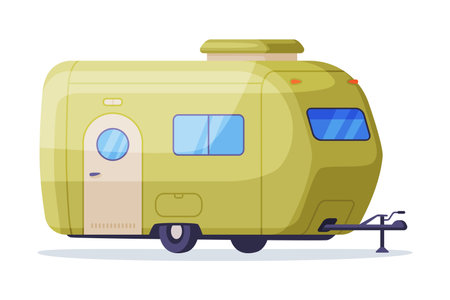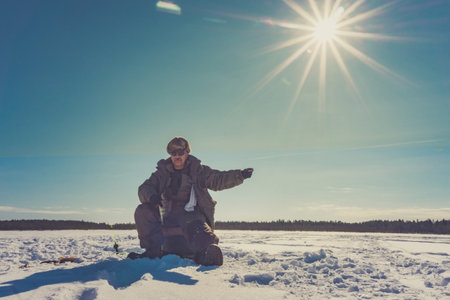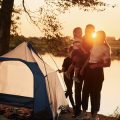1. Why Winter Camping is Worth It
Winter camping in the U.S. offers a one-of-a-kind experience that’s completely different from traditional summer trips. While it might sound chilly at first, there are several reasons why braving the cold is totally worth it.
Fewer Crowds, More Solitude
One of the biggest perks of winter camping is the peace and quiet. Popular national parks and campgrounds that are usually packed during the summer are often nearly empty in winter. This gives you a chance to enjoy nature without noisy neighbors or long lines at trailheads.
Stunning Snowy Landscapes
Snow transforms familiar trails and campsites into breathtaking winter wonderlands. From snow-covered pine forests to frozen lakes and icy waterfalls, the scenery alone makes winter camping unforgettable. Whether youre in the Rockies or the Adirondacks, youll see your favorite spots in a whole new light.
A Deeper Connection to Nature
Camping in colder temperatures requires more focus and intention, which often leads to a stronger connection with the outdoors. Youll become more aware of your surroundings, your body, and how you interact with nature. This mindful experience can be incredibly rewarding and grounding.
Top Reasons to Try Winter Camping
| Benefit | Description |
|---|---|
| Less Crowded | Enjoy popular sites without the usual crowds. |
| Breathtaking Scenery | Experience snow-covered landscapes and serene beauty. |
| Unique Adventure | Challenge yourself and build new outdoor skills. |
| More Wildlife Encounters | Spot animals like deer or foxes that are more active in winter. |
| Peaceful Atmosphere | Find calmness and quiet away from busy daily life. |
Pro Tip:
If youre new to winter camping, start with a short weekend trip close to home. That way, you can test out your gear and comfort level before heading into more remote areas.
Whether youre looking for solitude, adventure, or just a fresh perspective on your favorite trails, winter camping opens up a whole new world of outdoor exploration across the U.S.
2. Essential Winter Camping Gear
When it comes to winter camping in the U.S., having the right gear can mean the difference between an unforgettable adventure and a freezing disaster. Whether youre heading into the Rockies, Appalachians, or a snowy national park, here’s what you need to stay warm, dry, and safe out there.
Four-Season Tents
Winter conditions can be brutal—strong winds, heavy snow, and below-zero temps are common. A four-season tent is designed to handle all of that with sturdier poles, reinforced fabrics, and better insulation. Look for models with low-profile designs and vestibules for storing gear out of the snow.
Sleeping Bags & Sleeping Pads
A good sleeping bag is your best friend on a cold night. Choose a sleeping bag rated at least 10°F lower than the expected nighttime temperature. Down insulation offers great warmth-to-weight ratio but synthetic bags work better in damp conditions. Pair your bag with an insulated sleeping pad to block cold from the ground.
| Gear | Recommended Specs |
|---|---|
| Sleeping Bag | -10°F to 0°F rating, mummy shape, down or synthetic fill |
| Sleeping Pad | R-value of 4 or higher, closed-cell foam or inflatable with insulation |
Layering System
Dressing in layers helps regulate your body temperature and keeps moisture away from your skin. Here’s a simple layering breakdown:
| Layer | Purpose | Material Suggestions |
|---|---|---|
| Base Layer | Moisture-wicking next to skin | Merino wool or synthetic fabrics |
| Mid Layer | Insulation to retain heat | Fleece, down, or synthetic puffy jacket |
| Outer Layer (Shell) | Protection from wind and water | Waterproof/breathable shell jacket and pants |
Cooking Gear & Stoves
You’ll need a stove that works well in cold temperatures—white gas stoves like the MSR WhisperLite are ideal since they perform better than canister stoves in sub-freezing conditions. Don’t forget fuel-efficient cookware, insulated mugs, and a windscreen to conserve heat while cooking.
Traction Devices & Snow Travel Gear
If you’re hiking through icy trails or deep snow, traction is key. Depending on where you’re going, you might need:
- Microspikes: For icy trails and light snow travel.
- Crampons: For steeper terrain with hard ice.
- Snowshoes: For deep powder or off-trail exploration.
- Trekking Poles: With snow baskets for balance and support.
Other Must-Have Items
- Headlamp with Extra Batteries: Days are shorter in winter—always have light ready.
- Emergency Bivy Sack: Backup protection if things go wrong.
- Hand Warmers: Great for pockets, gloves, and boots during extreme cold snaps.
- Duct Tape & Repair Kit: Fix broken gear on the fly.
The right gear will not only keep you comfortable but also safe while exploring the American wilderness in winter. Up next: Learn how to choose the perfect winter camping location across the U.S.—from backcountry escapes to family-friendly campgrounds.

3. Top Winter Camping Locations in the U.S.
Winter camping in the U.S. offers a wide range of experiences, from snow-covered mountains to peaceful frozen lakes. Whether youre looking for a challenging backcountry adventure or a cozy campground with scenic views, there’s something for every winter camper. Here are some of the most popular and breathtaking spots across the country that are perfect for your cold-weather getaway.
🏞️ Rocky Mountain National Park, Colorado
Located in northern Colorado, Rocky Mountain National Park is a top destination for winter adventurers. The park transforms into a snowy wonderland with opportunities for snowshoeing, winter hiking, and backcountry camping. Moraine Park Campground stays open year-round and is accessible even during heavy snow.
Why It’s Great:
- Stunning alpine scenery
- Wildlife sightings like elk and moose
- Well-maintained trails for snow activities
🏔️ Mount Hood National Forest, Oregon
Just outside Portland, Mount Hood offers incredible winter camping options surrounded by thick forest and volcanic landscapes. Trillium Lake is a favorite spot, known for its frozen lake views and proximity to cross-country ski trails.
Why It’s Great:
- Accessible yet remote-feeling locations
- Skiing, snowboarding, and snowmobiling nearby
- Amazing sunrise views over Mount Hood
🌲 Adirondack Mountains, New York
If you’re on the East Coast, the Adirondacks are a must-visit for winter camping. With over six million acres of wilderness, this region provides endless options for both front-country and backcountry campers. Popular spots include Lake Placid and Pharaoh Lake Wilderness Area.
Why It’s Great:
- Deep snow and quiet forests
- Charming small towns nearby for supplies
- Plenty of trails for snowshoeing and skiing
🗺️ Quick Comparison Table
| Location | Main Attractions | Best For | Accessibility (Winter) |
|---|---|---|---|
| Rocky Mountain National Park, CO | Alpine views, wildlife, snowshoeing | Backpackers & nature lovers | Moderate – Some roads may close due to snow |
| Mount Hood National Forest, OR | Ski areas, frozen lakes, forest trails | Skiers & weekend campers | Good – Close to Portland with plowed access roads |
| Adirondack Mountains, NY | Lakeside campsites, deep snow trails | Northeast explorers & solitude seekers | Varies – Some areas require hike-in access during winter |
No matter where you choose to pitch your tent this winter, these iconic destinations offer unforgettable experiences that showcase the beauty of America’s snowy wilderness.
4. Tips for Staying Safe and Comfortable
Winter camping in the U.S. can be an unforgettable adventure, but staying safe and warm is key to enjoying your trip. Whether youre exploring the Rockies or setting up camp in the Adirondacks, understanding how to handle cold-weather conditions is essential. Here are some practical tips to help you stay comfortable and avoid common winter hazards.
Recognizing and Preventing Hypothermia
Hypothermia is one of the biggest risks when camping in cold weather. It happens when your body loses heat faster than it can produce it, causing your core temperature to drop dangerously low.
Signs of Hypothermia:
| Stage | Symptoms |
|---|---|
| Mild | Shivering, confusion, fatigue, rapid breathing |
| Moderate | Slurred speech, clumsy movements, slow reactions |
| Severe | No shivering, unconsciousness, very slow pulse |
How to Prevent It:
- Dress in layers – base layer (moisture-wicking), insulating layer (like fleece), outer layer (waterproof/windproof)
- Stay dry – change out of wet clothes immediately
- Keep moving – gentle activity helps maintain body heat without overexertion
- Avoid alcohol – it gives a false sense of warmth and speeds up heat loss
- Sleep with a hot water bottle (inside a sock) in your sleeping bag for added warmth
Managing Snow Conditions
Snow can be both beautiful and dangerous. Knowing how to assess and manage snowy terrain can make your trip safer.
- Packing Down Snow: Before setting up your tent, stomp down snow with your boots or snowshoes to create a solid base.
- Avalanche Awareness: If youre in mountainous areas like Colorado or Utah, check avalanche forecasts and carry safety gear like a beacon, probe, and shovel.
- Tent Anchoring: Use snow stakes or bury regular stakes horizontally under packed snow to secure your tent.
- Stay on Trails: Its easy to get disoriented in snowy landscapes—use GPS or map/compass navigation and mark your trail if needed.
Fire Safety in Winter Conditions
A campfire can provide warmth and comfort but should always be handled responsibly—especially in winter when dry conditions still pose fire risks.
- Build Your Fire Safely: Use an existing fire ring if available. Clear snow down to dirt or create a platform of logs or rocks to keep your fire from melting into the snow.
- Use Dry Wood: Bring your own firewood or use deadfall wood found above ground—never cut live trees.
- Always Extinguish Completely: Pour water until all embers are out and the ashes are cool to touch before leaving or going to bed.
- Backup Heat Source: Carry a portable propane heater approved for indoor/outdoor use as a reliable backup.
Food Storage in Freezing Temperatures
Caring for your food properly during winter camping not only keeps it edible but also prevents wildlife encounters.
Tips for Managing Food Storage:
- Avoid Freezing: Store sensitive items like eggs or cheese inside insulated containers or near your body during the day.
- No Open Containers: Keep all food sealed tightly; the smell can still attract animals even in winter.
- Bury It Smartly: If using snow as insulation, bury food upside down with a marker so you can find it later.
- Cook Away from Tent: Always cook and store food at least 200 feet away from where you sleep to avoid attracting animals like raccoons or even bears that occasionally roam during warmer winter days.
Recommended Food Items That Handle Cold Well:
| Food Item | Why It Works Well in Winter |
|---|---|
| Dried fruits & nuts | No freezing issues; high energy content |
| Packed oatmeal packets | Easily prepared with hot water; lightweight and filling |
| Canned soups/stews | Nutrient-dense; just need heating over stove/fire |
| Coffee/tea/hot cocoa mix | Keeps you warm and hydrated; morale booster! |
| Energy bars (non-chocolate) | Avoids melting/freezing issues; quick calories on the go |
The right preparation goes a long way when youre out in the cold. By learning how to recognize danger signs early and knowing what gear and strategies work best in winter settings, youll stay safe—and actually enjoy—the crisp magic of winter camping across America’s great outdoors.
5. Winter Camping Activities and Experiences
Winter camping in the U.S. isn’t just about surviving the cold—it’s also about embracing the unique experiences that come with it. From snowy adventures to peaceful moments under the stars, there are plenty of ways to make your trip unforgettable. Here are some fun and rewarding activities you can enjoy while winter camping.
Snowshoeing
Snowshoeing is a great way to explore snow-covered trails without sinking into deep snow. It’s beginner-friendly, doesn’t require much gear beyond snowshoes and poles, and allows you to reach scenic spots that are inaccessible by car or regular hiking boots.
Backcountry Skiing
If youre looking for more adrenaline, backcountry skiing offers an exciting way to traverse remote landscapes. Unlike resort skiing, this activity lets you carve your own path through untouched powder—but always check avalanche conditions and bring proper safety gear.
Stargazing
Winter skies tend to be clearer and crisper, making it a perfect time for stargazing. With fewer campers around and less light pollution, you can enjoy brilliant views of constellations, planets, and even meteor showers.
Wildlife Tracking
Animal tracks in the snow tell fascinating stories. Whether its deer, foxes, or rabbits, learning to identify footprints can turn a simple walk into a wildlife discovery adventure. Bring a field guide or use a smartphone app to help with identification.
Winter Photography
Snowy landscapes offer stunning photo opportunities. The contrast between white snow and dark trees, icy lakes, and soft morning light can create magical images. Keep your camera batteries warm—they tend to drain faster in the cold!
Recommended Activities Based on Your Interests
| Interest | Activity | Recommended Gear |
|---|---|---|
| Adventure & Fitness | Snowshoeing / Backcountry Skiing | Snowshoes or skis, trekking poles, layered clothing |
| Relaxation & Nature | Stargazing / Wildlife Tracking | Binoculars, star map app, insulated blanket, field guide |
| Creativity | Winter Photography | Camera with extra batteries, tripod, weatherproof bag |
No matter which activities you choose, remember to stay safe, dress appropriately for the weather, and always let someone know your plans before heading out. Winter camping in the U.S. is full of possibilities—so get out there and make some memories!


